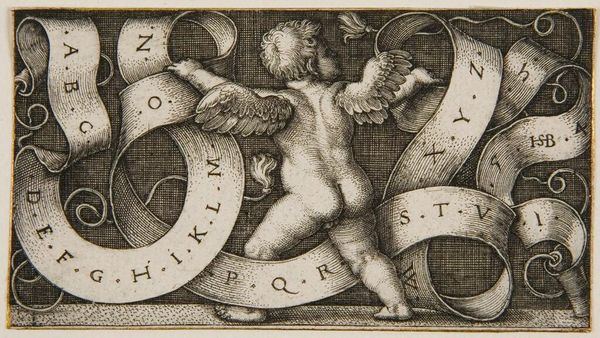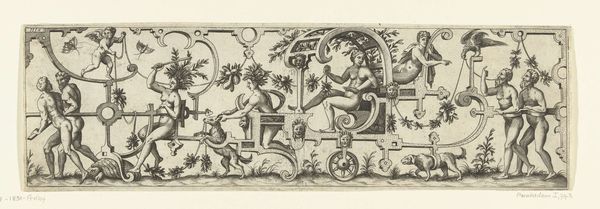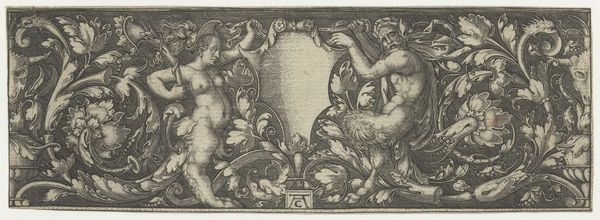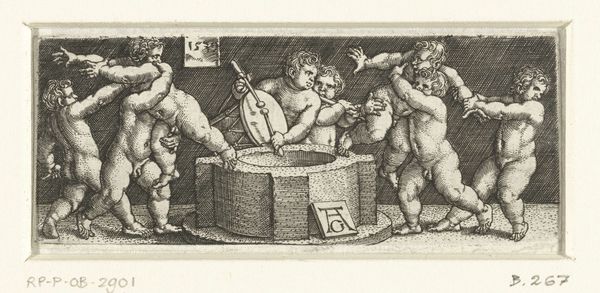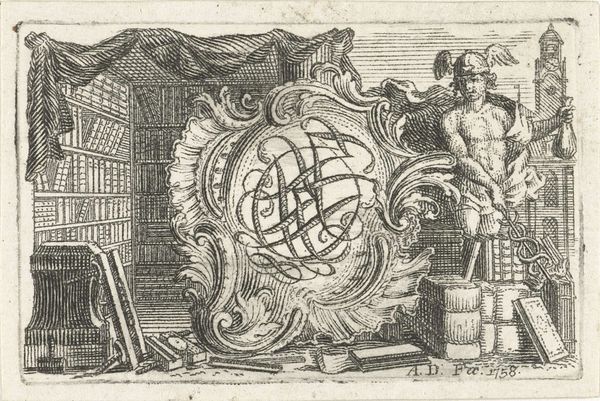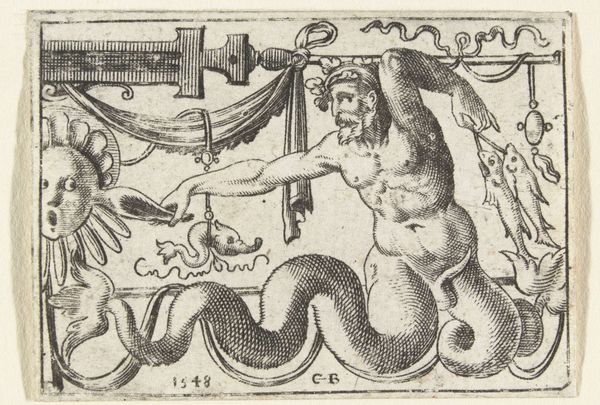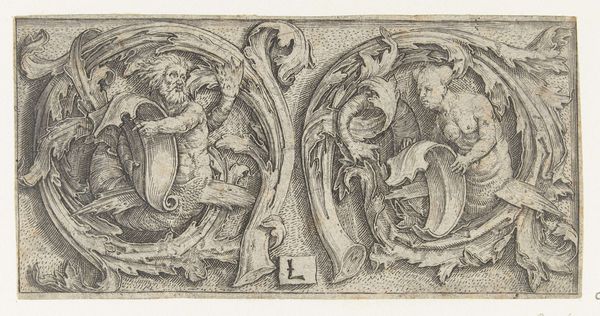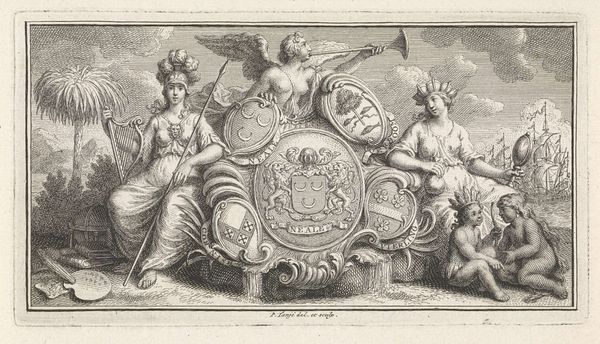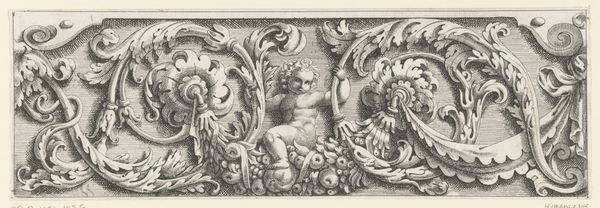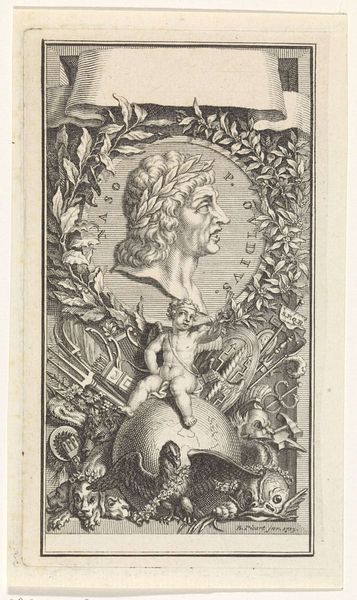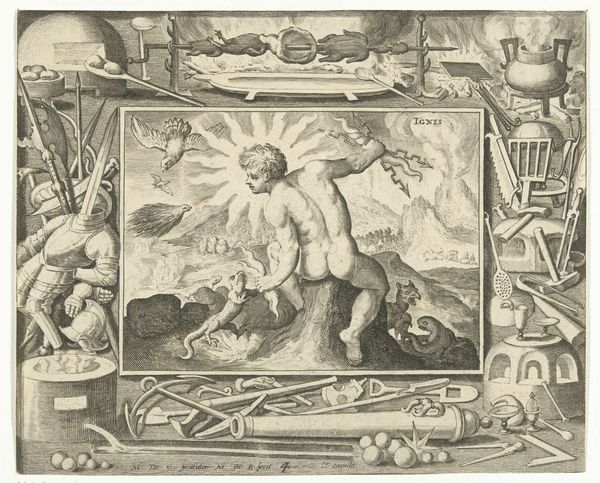
print, engraving
# print
#
figuration
#
11_renaissance
#
engraving
Dimensions: height 43 mm, width 78 mm
Copyright: Rijks Museum: Open Domain
Curator: Welcome. Here we have Sebald Beham's "Vlakdecoratie met putto, op de rug gezien," an engraving dating from 1510 to 1542. The piece currently resides here at the Rijksmuseum. Editor: It strikes me as playful, even a bit cheeky! The cherubic figure turning away, the winding ribbon displaying letters… there's an energy, a flitting quality to it. Curator: Absolutely. It's a wonderful example of the Renaissance fascination with classical motifs combined with innovative design. The print likely served as a model for decorative arts. It showcases the alphabet winding around the putto—quite an educational and aesthetic statement. Editor: Educational indeed, but I also wonder about the broader cultural context. Whose education was this aimed at? The putto, a winged male figure, speaks to idealised beauty, but what notions of class or privilege were interwoven with that beauty and access to literacy during this era? Curator: That's a vital question. Prints like this would have been disseminated among artists and artisans. The level of literacy and cultural awareness needed to truly understand its meaning wasn't universal. Beham's workshop itself played a significant role in shaping the image of the Protestant Reformation. Editor: It makes you question the inherent politics of representation. Is it truly innocent, this depiction of beauty and knowledge, when access to both was deeply stratified along socio-economic lines? I'd argue the cherub can read as an emblem of elitism. Curator: Well, to label it purely elitist risks simplifying the landscape of early printmaking. Beham worked in a complex environment, navigating religious reform, peasant wars, and shifts in patronage. His images offered both artistic innovation and potentially served as quiet vehicles of humanist values to a receptive viewership. Editor: Perhaps. Still, analyzing through a contemporary lens helps unveil hidden power dynamics that artists themselves might not have explicitly addressed, but were undeniably shaped by. Curator: That tension between historical context and contemporary interpretation is exactly why engaging with art across centuries remains so rewarding. Thank you for those important considerations. Editor: The dialogue itself helps highlight art’s continuing capacity to spark necessary social critiques. Thanks for sharing your expertise.
Comments
No comments
Be the first to comment and join the conversation on the ultimate creative platform.
